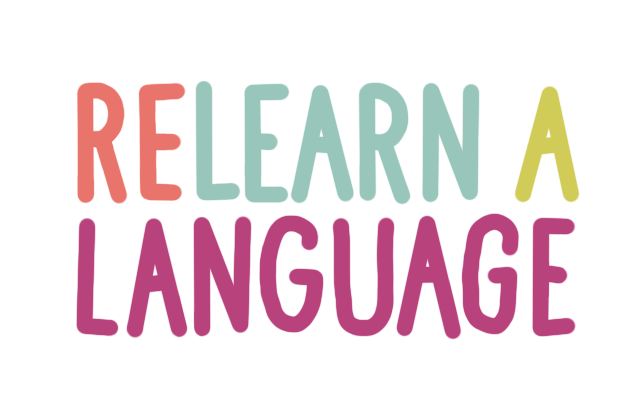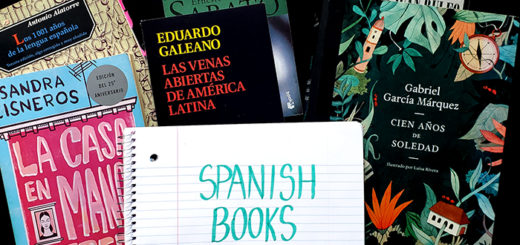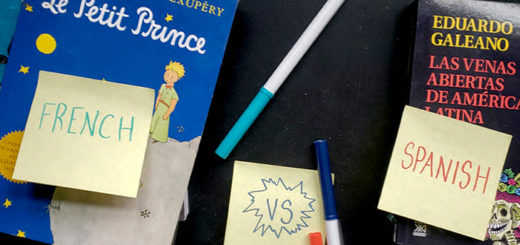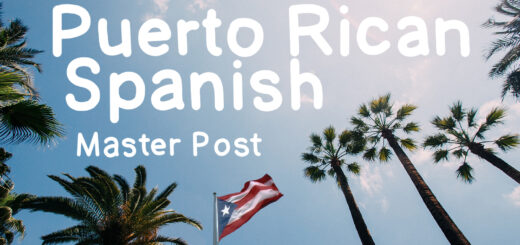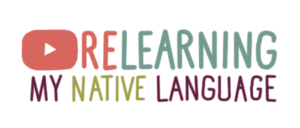How long does it take to learn Spanish? [CALCULATOR]
by Marissa Blaszko · January 14, 2022
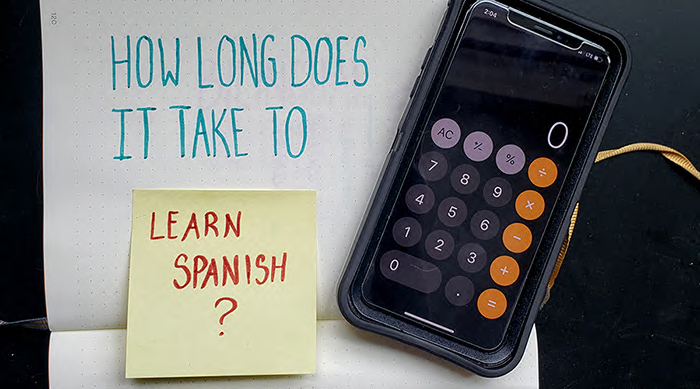
Many people or organizations have tried to answer how long does it take to learn Spanish, but their answers are often very, very different:
- 4 years according to American universities
- 960 hours according to the CIA
- 3 months according to writer Benny Lewis
- 2 weeks according to this YouTuber
- 4 days according to some random guy on the internet
Um, wait… so how long will it take you to learn Spanish?
And what does “learn Spanish” even mean?
Let’s dive in and find your own personal answer.
This article is part of a larger series called French vs Spanish. Click the title to see the main article, or click here to see all French vs Spanish articles.
STEP 1. Decide on a Spanish goal
What does it mean to speak Spanish?
That depends on what your definition of “speak” is.
And since “speak” is probably your goal, we’re going to give you a final goal to shoot for.
There are 6 levels in language learning as set by the Common European Framework. So now we’re going to figure out which of those levels is your “end goal”.
My advice is to pick a “modest goal” and then a “push goal”.
Because saying “the highest!” will probably burn you out.
In this section, I’m going to define every one of those 6 levels. When you read the level definition that seems good to you, follow the instructions in that section.
To do your personalized how long does it take to learn Spanish calculation, grab a pen and paper.
Even if you are relearning Spanish or learning it as a heritage language, follow along with the exercises as they are since your previous history with Spanish will be accounted for in one of the later steps.
Early Beginner: A1 Level Spanish
There are two ways teachers run beginner Spanish classes. So when you start a class, you’re going to find your program or teacher has one of two paths for the course:
(1) True CEFR content. You’ll learn days of the week, shapes, colors, time telling, present tense, clothing, household objects, and asking questions. The goal is to help you move slowly, like a child would develop the language, but keep you well-rounded.
(2) Communicative content. You’ll be able to learn the present tense, asking questions, presenting your opinions. The goal is to get you speaking as quickly as possible, even if you make a bunch of mistakes and don’t have that much vocabulary.
Either way, the grammar will be really similar. But when you’re studying with a big group of people (like in immersion schools or with mass-marketed programs like Rosetta Stone) you don’t have the flexibility to cherry-pick what you want to learn. I personally enjoy working with private teachers because of that.
In my experience, just mastering A1 is a perfect goal for people who…
- …want to use their language to travel and need limited vocabulary (receiving instructions, asking questions, ordering food).
- …just want to try out the language for fun.
And here are some sample sentences you’ll be able to say confidently in the language, even though you’ll likely have to think a bit:
- “Two tickets, please. Can I have a window seat?”
- “Just water for me, thanks.”
- “Does the desert have peanuts? I’m allergic.”
- “I like Madrid a lot, but I like Barcelona better.”
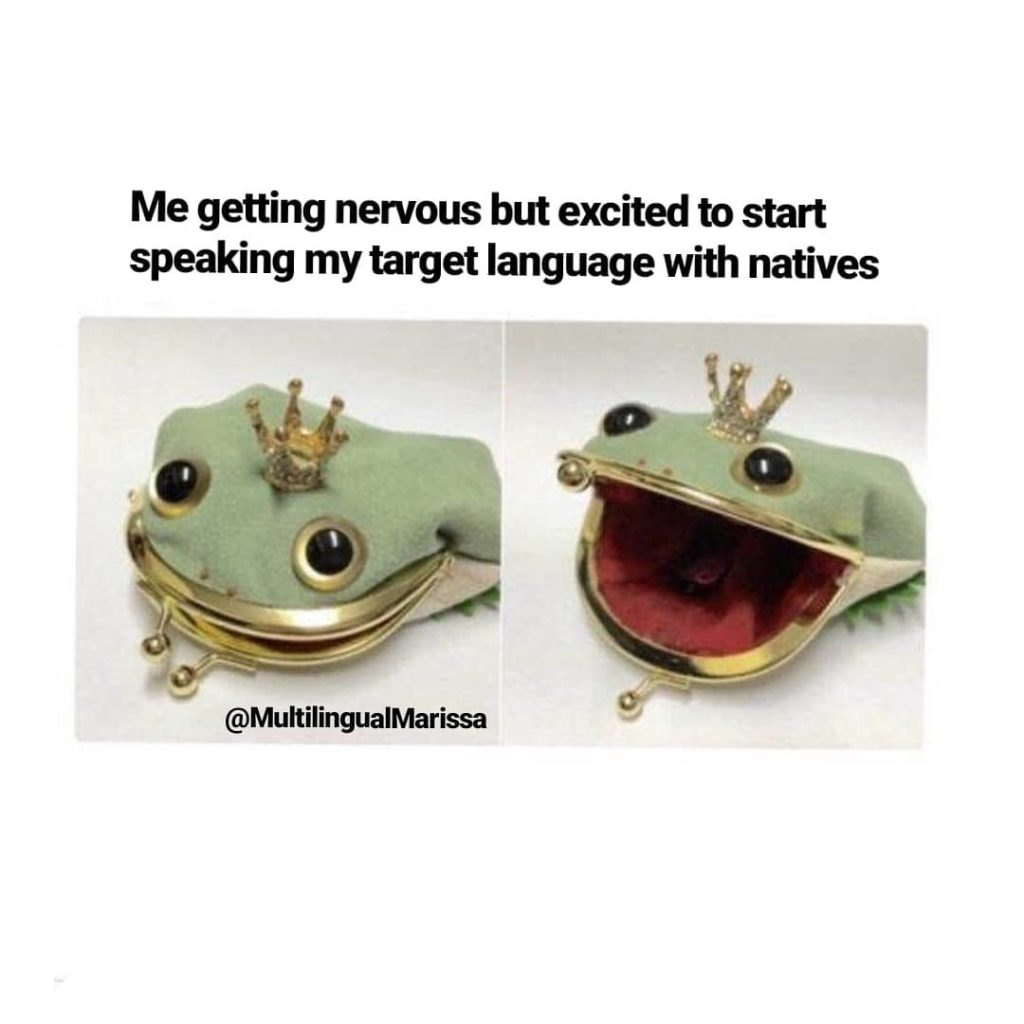
In A1, you’ll be really limited in subject matter but this is still a great level of language usage! And, a dirty secret from the polyglot community: when someone says “I learned Spanish in 5 days” this is largely what they mean.
When I was learning Spanish in immersion schools, normally students were put through all of A1 in 4-6 weeks (depending on the individual student) with 20hrs a week of classes.
If you think A1 is your goal, write down 100-140 hours to start with on your paper.
And if that seems high to you because “it only takes a few days to learn that much on DuoLingo”, choosing Spanish words from a word bank and being able to use the language in real life are VERY different things.
Remember: this isn’t your final number, just the first part of the calculation.
If this level feels good for a goal, skip to Step 2.
If you want a higher level, then let’s keep reading.
Advanced Beginner: A2 Level Spanish
Most immersions school students I’ve met are happy with A2, and for me personally once I finished up A2 in Italian I said “achievement unlocked!” and put down the language.
In A2, you’ll learn…
- …the past and future tenses!
- …how to talk about needs and wants in a more profound manner
- …Writing! Reading!
- …how to share hobbies and preferences
- …how to talk about your job and things you know about
And some examples of A2 sentences are:
- “I’m a graphic designer, but I learn languages for fun. What do you do?”
- “Yesterday I went to the beach, but I couldn’t go snorkling because the beach was too crowded.”
- “I’m going to take a cooking class tomorrow. Do you want to come?”
A2 is perfect for…
- …language learners who want to meet people while traveling.
- …people who need a language in limited work situations.
- …Spanish learners who need to only occasionally speak in the language about limited topics.
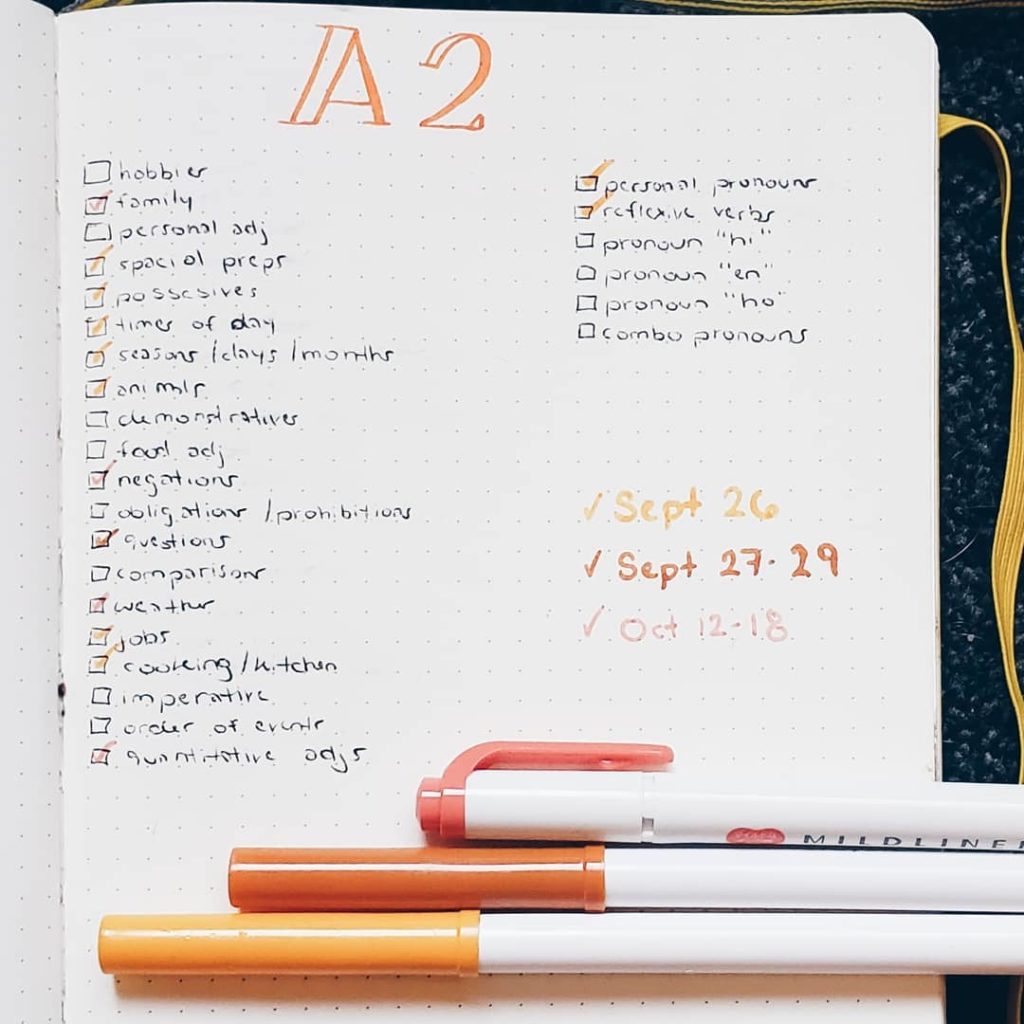
Almost all of the awesome people I met in Spanish immersion schools topped out at A2 because they found it good enough for navigating through most of what they want.
In various 3 month challenges, this is normally the level of learning you’ll get to.
And it’s a huge accomplishment (especially if, right now, you only speak English). For me personally, it took me two months of living in Mexico full time to get here (while using only Spanish all day every day). So I think 3 months is realistic in most cases.
If you want to learn Spanish to level A2, which includes everything in A1, I would calculate it taking you 250-300 hours. So jot that down for step 1 of this calculation.
If this is all you want for your goal, you can skip to step 2.
But there are a lot of people (like myself) who want higher levels, so let’s keep reading.
Early Intermediate: B1 Level Spanish
Do you want to read and write?
Send texts, have a chat, and understand lyrics to music?
Welcome to the wonderful world of B1!
When you master B1 Spanish you’ll be able to:
- Chat more or less fluently about subjects you know about in real conversations
- Understand and semi-communicate about subjects you’re not used to
- Do useful things like rent a car, rent an apartment, or go on a museum tour
- Express your real thoughts and feelings on subjects, and explain why
- Work in the language with clients or coworkers
B1 is perfect for most foreign language learning. This level is what I call “conversational”–you can have conversations about most things, but will sometimes bump into a words or things you can’t express, so you won’t feel 100% fluent.
Here’s where the real work begins though. For me to get past B1 it took me 5 months of living in Mexico and speaking Spanish around the clock with no English. It’s a bit of work.
This is where the CIA estimate comes from. According to the Intelligence Language Institute (the part of the federal government that trains diplomats and foreign service workers) mastering B1 Spanish will take about 900-1000 hours as a starting number. (You can continue you personalized calculation below.)
Yup. That’s a big number.
But it’s also a big goal.
If B1 Spanish is your goal, jot down that number for this first step and head to step 2.
If you’re even more ambitious, keep reading.
Advanced Intermediate: B2 Level Spanish
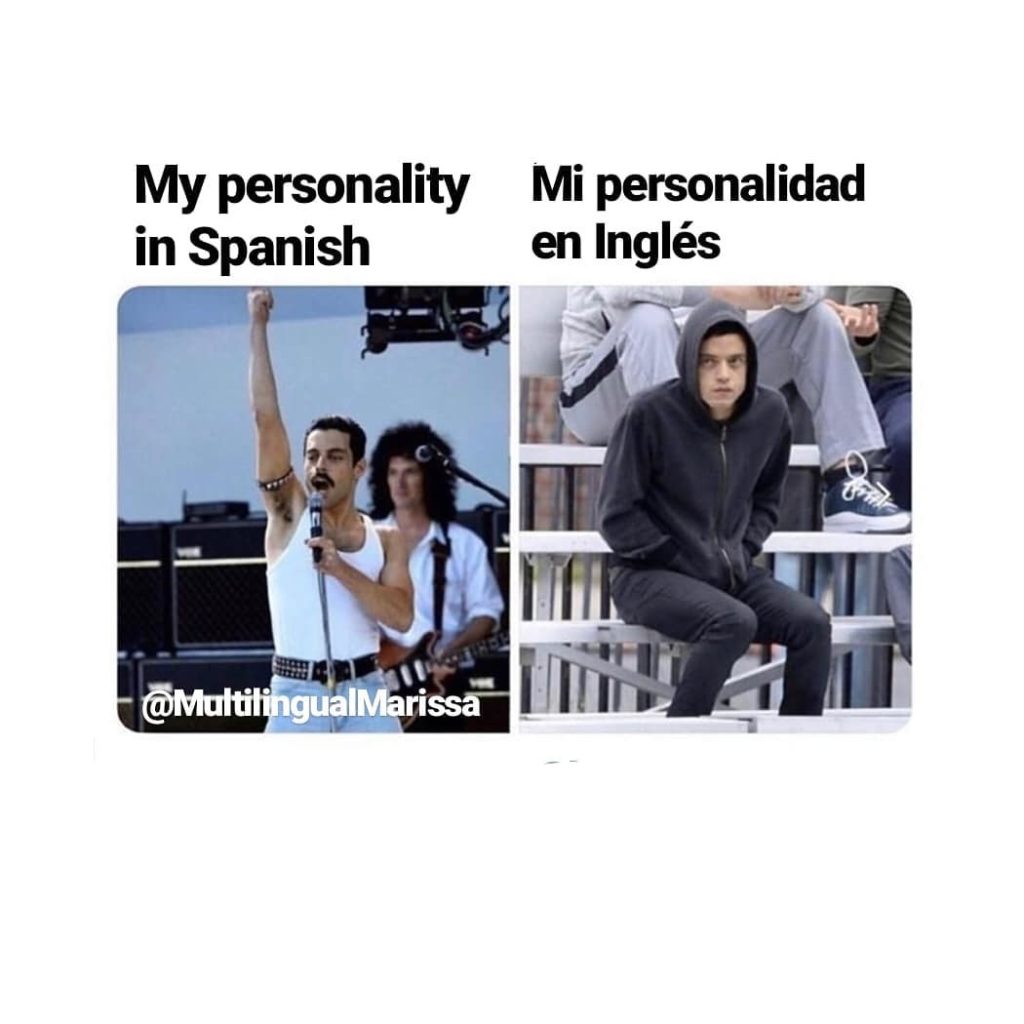
Mastering the B2 level is most language learners’ fantasy.
B2 is professional competency–you can take university classes, work in a totally Spanish-speaking company, and make friends with ease.
The grammar at B2 gets really specific, and a lot of what you’re really doing here is learning specific vocab.
If you can thoroughly learn B2 Spanish you’ll be able to:
- talk about complex hypothetical situations (“I should have left earlier, but I wouldn’t have had the time to get ready!”).
- tell complicated stories and speak about things outside of your immediate fields of interest.
- laugh at jokes, use slang, and understand cultural references.
- watch Netflix without a problem.
- read most books.
- work in Spanish and make friends with ease.
But great power comes great responsibility, and with a high level of Spanish comes a high level of study.
Most immersion courses aim to get you through B1, with university courses aiming for C1.
That leaves B2 as sort of a forgotten middle child, even though it’s my personal favorite level of language learning.
But if this is true fluency, how long does it take to become fluent in Spanish?
Well, it took me about 5 months of living in Mexico (and taking full-time classes) to polish my Spanish up to a B2, which puts me at around 1,500 hours of learning.
That also falls neatly between the B1 government and C1 university numbers, so we’ll use that.
Again: remember that that’s a starter number.
We’ll customize it for you below. Go to Step 2 to keep calculating.
If you’re learning Spanish as your “first-second language” this is a very ambitious goal.
But if you’re curious about the other two levels, let’s keep reading.
Advanced: C1 Level Spanish
How long does it take to learn Spanish through C1?
Let’s just say: a long time.
So why would you learn Spanish through C1?
The answer is, largely, if you’re going to university to study Spanish. In that sort of environment you would learn:
- how to analyze Spanish literature, poetry, and arts.
- writing in various tones (from slang-filled text messages to formal university papers).
- how to speak about incredibly detailed subjects with very specific vocabulary.
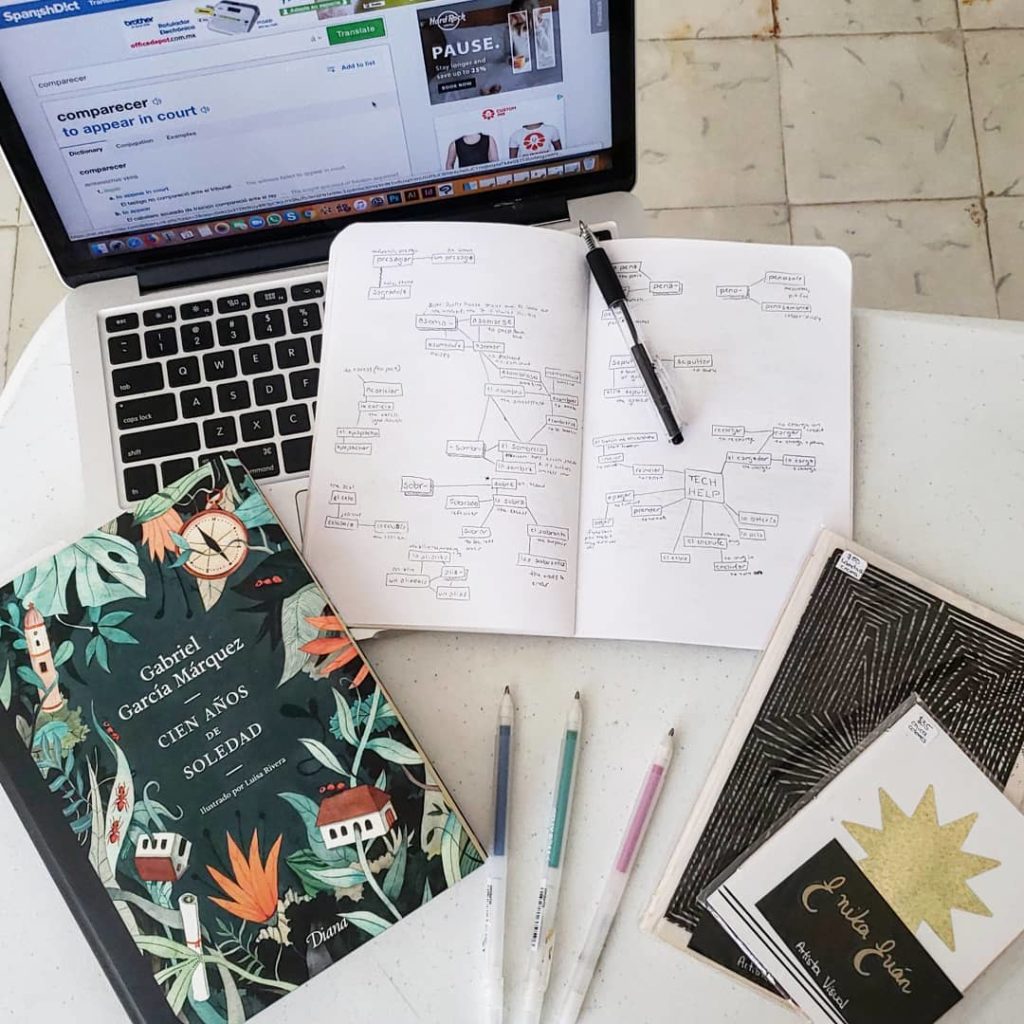
At this point, we’re talking beyond fluency.
We’re no longer asking how long does it take to become fluent in Spanish, but rather “how long does it take to become extremely, extremely talented at Spanish”
And the biggest difference is your vocabulary.
At C1 level Spanish, some users estimate as low as 3,000 active vocabulary words (meaning you can pull out and use any one of them at any moment) but I personally think it’s at least 10,000 considering most adults can use around that many in their native language.
And how long will that lovely Spanish level take you to get?
This is about as high as most university courses aim to get you, so let’s take a look at what they say.
(We’ll use the American Credit system here, and if you’re from another country, just roll with me for this!)
- NYU requires a minimum of 27 Spanish credits plus study abroad for one semester
- A 3 credit class is 5-6 hours of work per week in a semester
- There are typically 15 weeks in a school semester
- So just in class credits, that’s 2,227.5 hours
- Plus a semester abroad
That means that a C1 Spanish level is going to take you 2,300-3,950 hours as a starting number.
(Remember, we’ll personalize this calculation below.)
And as someone in the c-levels, that sounds about right to me.
If you’re new to language learning I don’t recommend setting your Spanish goal this high at all. Aim for something more reasonable and if you fall in love with it, keep going.
My original goal was B1 or B2, but my Spanish is now somewhere between C1 and C2. (Largely thanks to living in Mexico for 3 winters in a row.)
Go to Step 2 to keep calculating.
But hey, are you curious about C2 Spanish? Let’s keep on trucking and see what it’s all about!
Mastery: C2 Level Spanish
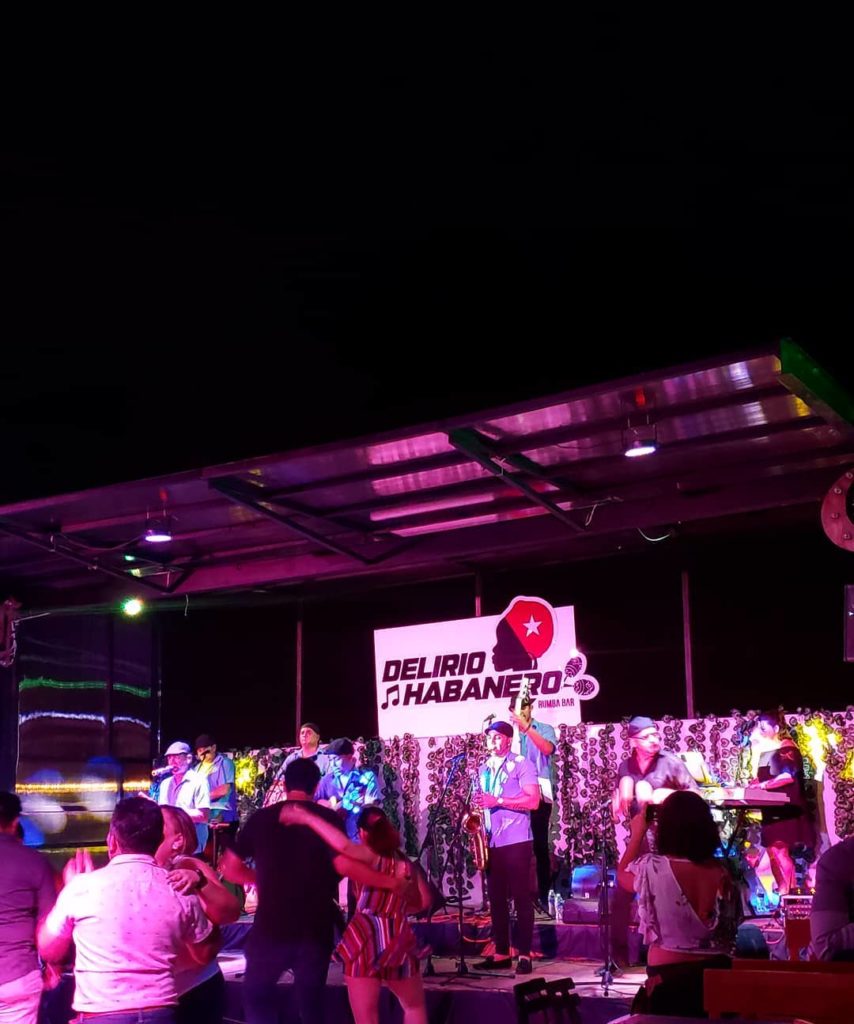
C2 level Spanish means you have a better command for the language than even most native speakers.
Spanish has almost 300,000 words (English has around 170,000) and the average adult can use around 20,000 of them (but understand around 40,000). [source] And at C2, that’s how many you can use and understand.
C2 Spanish means you’re reading Don Quijote in the original language, aka the Spanish of 1605 (before the US was even really settled by Europeans!).
You are negotiating business deals or working in a lab or doing original research.
You’re correcting native speakers’ grammar. And using words they’ve never heard of.
C2 Spanish is such good Spanish that you wonder why your Spanish is this good if no one can appreciate it.
And how long will that take?
Who knows.
But I would clock your starting number at well, well over 4,000 active learning hours.
I say active learning because, unless you’re truly studying the language under a microscope, just living in immersion isn’t going to get you here. Because almost no one speaks Spanish this well, including natives.
I have personally studied Spanish in small or private classes for around 1,600 hours, plus lived in Latin America for a year and a half, plus studied probably another 1,000 solo (at least), and I still don’t think I have a C2 level Spanish.
So there you have it.
If something has possessed you to analyze medieval Spanish literature, start a high-power career in Madrid, and debate the finer points of Peruvian cuisine with a food critique: C2 Spanish is your goal.
But really. Aim for a B-level to start.
If you truly fall in love with the language (as I did) and want to take it to a whole other level after that, come back to this post.
STEP 2. Factor in the difficulty of Spanish as a language
From here on in we’re calling your Step 1 number “your starting number”.
(If you have two starting numbers like I suggested, your realistic number and your dream number, even better. But we’ll keep them as two separate equations with two separate starting numbers.)
Now let’s look at the difficulty of Spanish and what strategies you will need to overcome those difficulties.
Step 2.1 - Spanish Grammar
Spanish grammar is some of the easiest out of any European language for English speakers, but it still has its own special things.
If you only speak English, it’ll be a shock to find out there are 4 different words for “the” and that basically every time you use a noun or an adjective you have to change some part of it.
Even worse: if you only speak English, you’ll be tempted to translate sentences directly. You’ll likely make the silly mistake of saying “I want you to help”, but when you say that word-for-word in Spanish it means… well… I want you.
Big yikes.
- So if you’re a monolingual English speaker, add +10hrs to your original number.
- If you speak a second language, no matter what the second language, you get a nice -10hrs.
- And if that second language is germanic, romantic, or slavic? Another -5hrs for you!
- If you have previous experience with Spanish, either because you took it in schools or because you have speakers in your family, don’t touch your number at all. We’ll factor in your experience in later steps.
Step 2.2 - Spanish Vocabulary
Good news! About 60% of English is actually from Latin, and guess what else is from Latin? Spanish!
Generally, however, the words that we have in common are linked to philosophy, the sciences, or the arts–advanced words that were imported into English by Latin-speaking conquerors, and reflect the wealth of their culture.
But which languages have even more in common with Spanish? Other Latin languages of course! Italian, Portuguese, Catalan, French, and over 40 others.
- So if you’re a college-educated native English speaker, subtract -10hr from your total time
- If you already speak another romance language to any degree, subtract -15hr from your total time
- But if you are an English speaker without a college education, don’t touch your total number
- And you already have some Spanish experience but don’t fall into one of the above categories, don’t touch your total time (yet)
Step 2.3 - Spanish Speed and Dialects
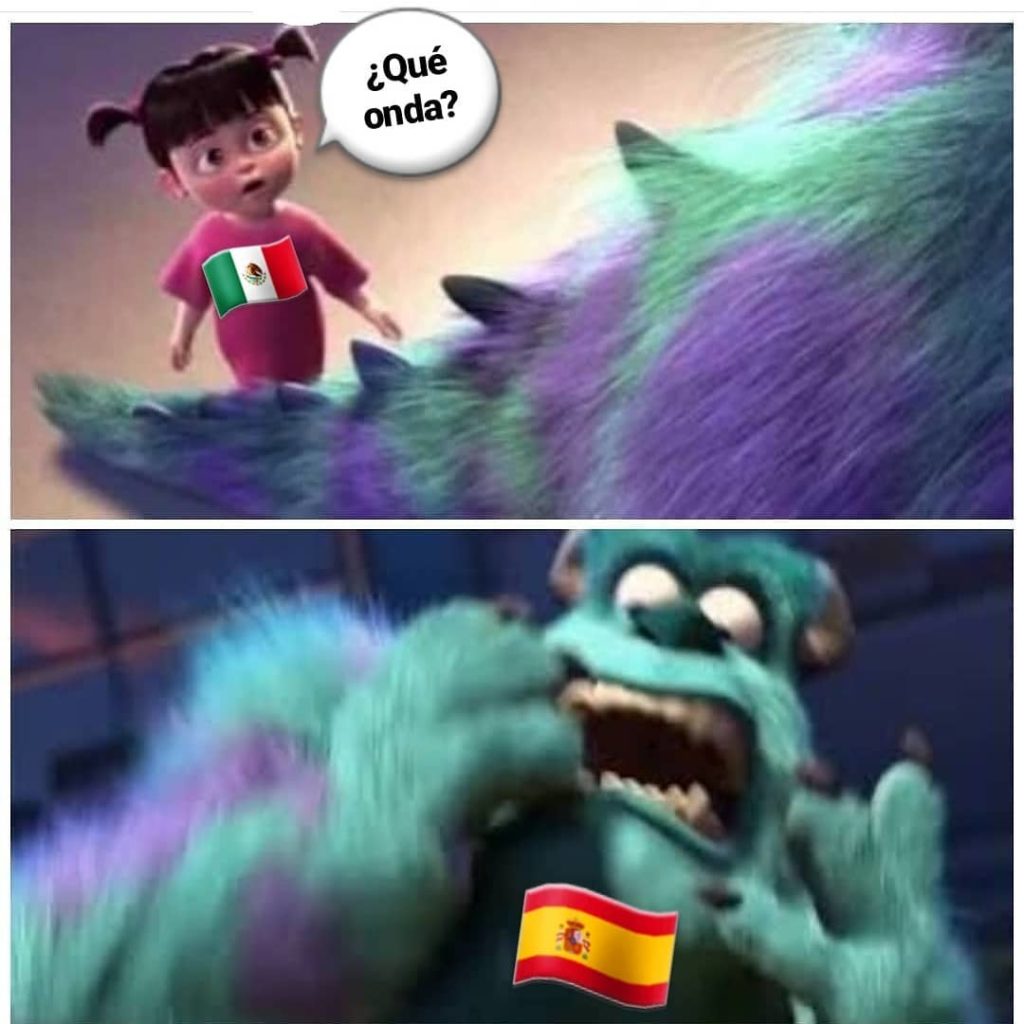
A few years ago I was so confident in my nice and shiny B2 Spanish!
I walked right up to a group of Colombians and asked them what was up, knowing that I could flow right into nearly any conversation.
And they just stared at me.
Turns out, the casual phrase I had learned in Mexico to ask what’s up (“que onda”) isn’t used anywhere else.
Just like if you’re from the US and have never watched British TV, you might know what a pram is. (And any British person who’s never watched American TV might not know what a stroller is!)
And no one had ever heard it before, so they didn’t even know what I was saying.
So if you truly want to master Spanish and it’s many dialects… you’ll have to learn several of them.
The differences between Spanish dialects is much wider than the differences between American and UK Englishes. Many native speakers have a hard time understanding each other.
And some linguists are even campaigning to recognize the different types of Spanish as different languages entirely!
Plus: less access to global media means speakers are also less likely to hear each other’s dialects and recognize words (such as how in the US we likely know that “the lift” is “the elevator” and vice versa.)
Spanish is also one of the fastest spoken languages, next to only Japanese.
- So if you’re only aiming to A1 or A2 Spanish, leave your number as it is. You won’t need to worry about multiple dialects.
- But if you’re interested in learning Spanish to B2 or higher, you’re going to need some more specific vocabulary to communicate with people across multiple countries. Add +30hrs to your total time.
STEP 3. Factor in your past Spanish learning experiences
Did you also fail out of Spanish after 4 years of public schools, then spend 10 years thinking you were horrible at languages?
Or was that just me?
Oh wait–you spoke Spanish as a native language as a child but forgot it all as an adult?
Wait? No, that was just me with my Polish?
Well, if for whatever reason either of these stories sounds like you, I have good news:
You’re not bad at languages. You’re not lazy. And you’re not alone.
This whole blog was created because of how many awesome, smart, and curious people have been convinced they’re bad at languages because the systems that they were put in as children trained them to be bad at languages.
I invite anyone who’s relearning a language to dive into this website and learn more about heritage languages or my YouTube channel where you can follow me relearn Polish, my native language.
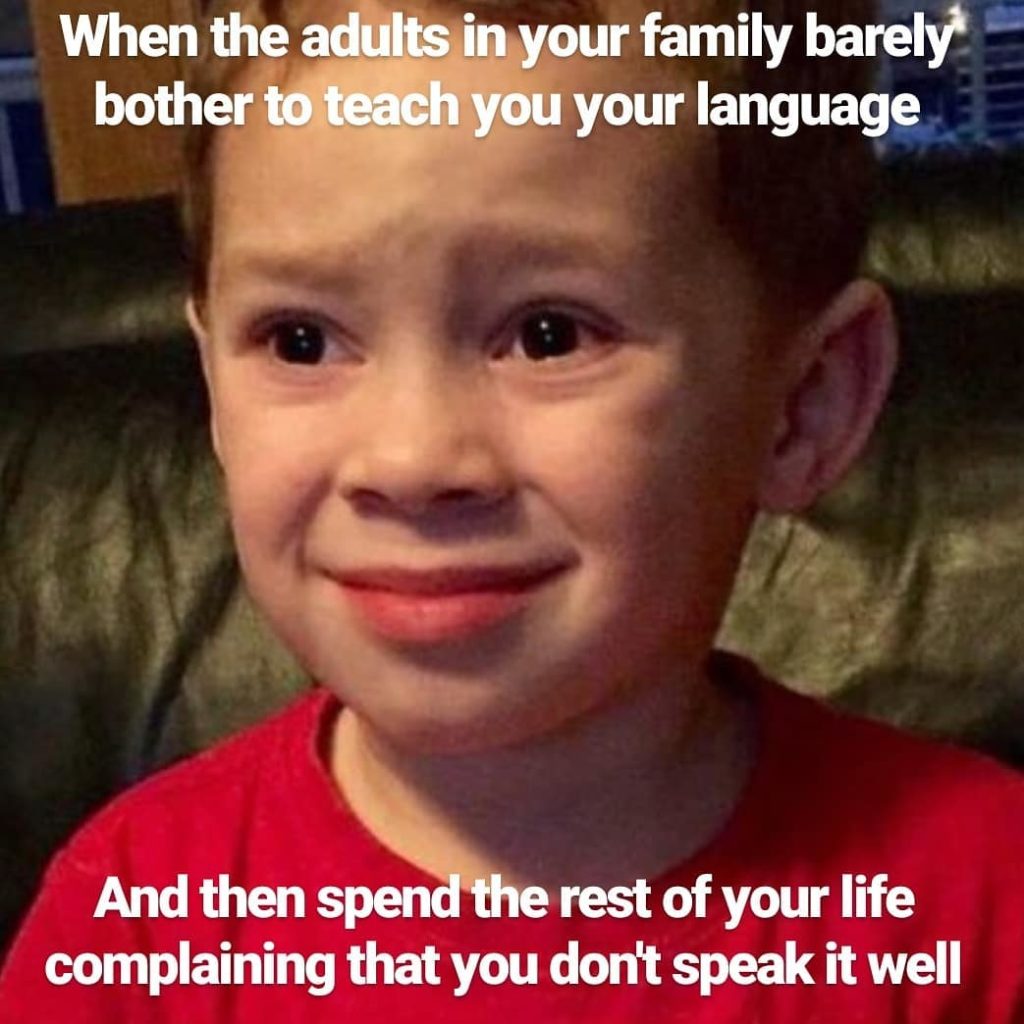
How long does it take to learn Spanish is a very different question if you've already learned some Spanish.
If any of these situations of those situations sound like you, let’s adjust your time a bit since you’re a false beginner.
- Did you learn Spanish in schools as a child? Subtract -5 hours for every year of classes you learned it in. (Not much, I know. Sorry.)
- If you spoke Spanish fluently as a child until age 7 or so, knock off -40 hours because so much of A1 or A2 is going to come flooding back to you–you just need a refresher. You’re a heritage language learner and while there will be plenty of more advanced stuff you’ll have to learn from scratch, you just need to unlock some of the basics.
- If you spent any time in high school or university in immersion, knock off another -10hrs for every 6 months you spent in a Spanish-speaking environment. (Lucky!)
STEP 4. Factor in Spanish immersion (without leaving the house)
"When will I find out how long does it take to learn Spanish!" asked the impatient reader.
(I know this is taking a while, but I promise your number will be correct.)
Wouldn’t it be great to just learn through immersion with no energy or studying, naturally like you did when you were a kid?
I’m sorry to be the one to say this, but that’s a myths. Everyone, including kids, needs to study outside of language immersion.
The good news, however, is that while adults need to study we still can learn languages must faster than children.
We can get into that in another article, but without getting too sidetracked, let’s talk about some of the advantages of immersion–even if you don’t have the money to do it abroad.
- Reinforce what you learned with real-life examples. Simply put, you must study. But if you spend a class learning the vocabulary for clothing, why not reinforce that by watching a documentary about a fashion designer? Or if you learned about travel vocabulary with a textbook, why not listen to a podcast about the Amazon Rainforest to seal the deal? You’ll maintain more of what you know and enjoy your study hours a lot more.
- Clock more hours learning Spanish without the dedication of studying. As you can see, the time needed to learn a language is tremendous. There’s no way around it. But if you can spend 1/3 of that reading books, watching Netflix, or listening to podcasts? It’ll fly by.
- Form a connection with the language. It might sound weird if you haven’t started to learn Spanish yet, but unless you really connect with it learning it will be a chore at best, fruitless at worst. But you can start enjoying your new Spanish even at a very early level if every week you’re looking forward to your favorite Mexican YouTubers‘ latest video, copying recipes from a Mexican grandmother, or spending hours in the car singing along with Bad Bunny.
Because immersion is best done once you already have some understanding of the language, it’s best applied once you have a B1 level or immediately if you’re a heritage speaker.
However, even at the very beginning of your Spanish learning journey, we can take off a few hours?
- If you make yourself 3+ playlists of music in Spanish that you actually enjoy, take off -1hr per playlist (and if you want, you can follow me on Spotify here for some suggestions!)
- If you are a YouTube user and you go follow Easy Spanish, take off another -1hr.
- If you’re a podcast fan and you go follow some of the beginner podcasts my friend Ingrid recommends
- But remember. The trick is that you must actually use all of these regularly! The equation for “how long does it take to learn Spanish” only works if you work.
STEP 5. Take into account a margin of error
None of this calculation is truly perfect–especially because all human beings are so unique.
This has nothing to do with you being good or bad at learning languages.
The reason this calculation is imperfect is that we all don’t learn in the same way.
For me personally, I shot through A1-B1 Spanish in 2 months which is supposed to be impossible.
And then I got stuck at B2 Spanish for basically a year, which left me totally burnt out and frustrated.
For others, you may find the opposite: that you have a really slow start, but then something *clicks*.
Or you start on the wrong path, using tools you don’t love, and waste time. (Or, you accidentally stumble into the perfect tool for yourself Day 1 and shave off a bunch of hours.)
So with the number of hours currently listed on your paper, you’re going to take into account a margin of error that is +/- 10%.
So let’s say the number you’re currently working with is 1,200hrs. Your two new numbers are going to be 1,080 and 1,320.
Or, if you set a more modest first goal and are currently looking at 230 hours, your new range is 207-253.
This range is almost certainly how long takes to learn Spanish for you individually, based on your goals, your past, and your future.
But there’s still one more thing we need to take into account for figuring out how long it will take for you to learn Spanish: your money and time.
STEP 6. Budget learning time and money
You might be wondering: How long does it take to calculate how long does it take to learn Spanish?
Trust me–I could have done a really sloppy job on this article instead of putting several days into writing it.
But I want to make sure we get you a great number, so from now on we’re going to call the number (or range of numbers) you have “your total”.
But we’re almost there! Last mini-steps!
Step 6.1 - Use your time wisely
You’re probably looking at a lot, lot, lot of hours right now…. but it’s okay.
We’re going to break it up into days now, which will help us determine how many weeks, months, or years it’ll take us to get to our goal.
We’re not really going to change our number very much here, but convert it into days.
Then from there, you can convert your days into whatever larger chunk of time (likely months) makes the most sense for you.
Check out my suggestions for each slice of time, but the equation you’ll be plugging it into will be:
[your number of hours as it is x 60min] = number of min you will need to learn Spanish
That number of min ÷ ? minutes per day = how many days you will need
You can then convert those days into weeks, months, or years
If this looks confusing, don’t worry. I’ll help you break it down.
How much time can you dedicate to learning Spanish every day?
- Daily 5min – Not too bad if you can do it daily–especially if you couple it with a longer hour or two on a free day. I will warn you, however, that this isn’t much time at all: maybe like 1 YouTube video or 1 round of an app. If you can find just 5 more minutes a day to push this number up a bit higher. (And when you look at your own solution to “how long does it take to learn Spanish”, you’ll get a bit overwhelmed.)
- Daily 5-30min – Heck yes! This little bit every single day will add up, and it’s how much I personally spend on most of my language studies. I love to warm up with a good YouTube video, dive into my flashcards, and then do a little bit of journaling in my language. Sure, some days I only have 5min and some days I have the full 30, but couple this with one fun day of tutoring or a foreign film or extra study? You’ll zoom off to fluency in no time.
Daily 30-60min – While this may seem doable because you’re super motivated right now, it might not be sustainable–especially if you normally don’t have a lot of free time to begin with. However, at my C-level Spanish, this is what I do now. (My other languages only get 15min average a day.) You can watch the news in your language, do flashcards, add some new songs to a playlist, journal, work out of a workbook… the list goes on. But my advice is to start with a lower amount of minutes per day until you have a habit built.
- Daily 60-90min – I call this my “push” schedule. If I have a reason why I need to really have my Spanish looking it’s best (maybe a meeting with an important client or a trip to the islands) I’ll dedicate 60-90min to learning Spanish every day for 1-2 weeks. Besides that, it’s largely unsustainable and honestly boring. But if you want to do this for your first week or two, then dial it back to a smaller amount per week, it’s a nice way to start yourself on the right foot.
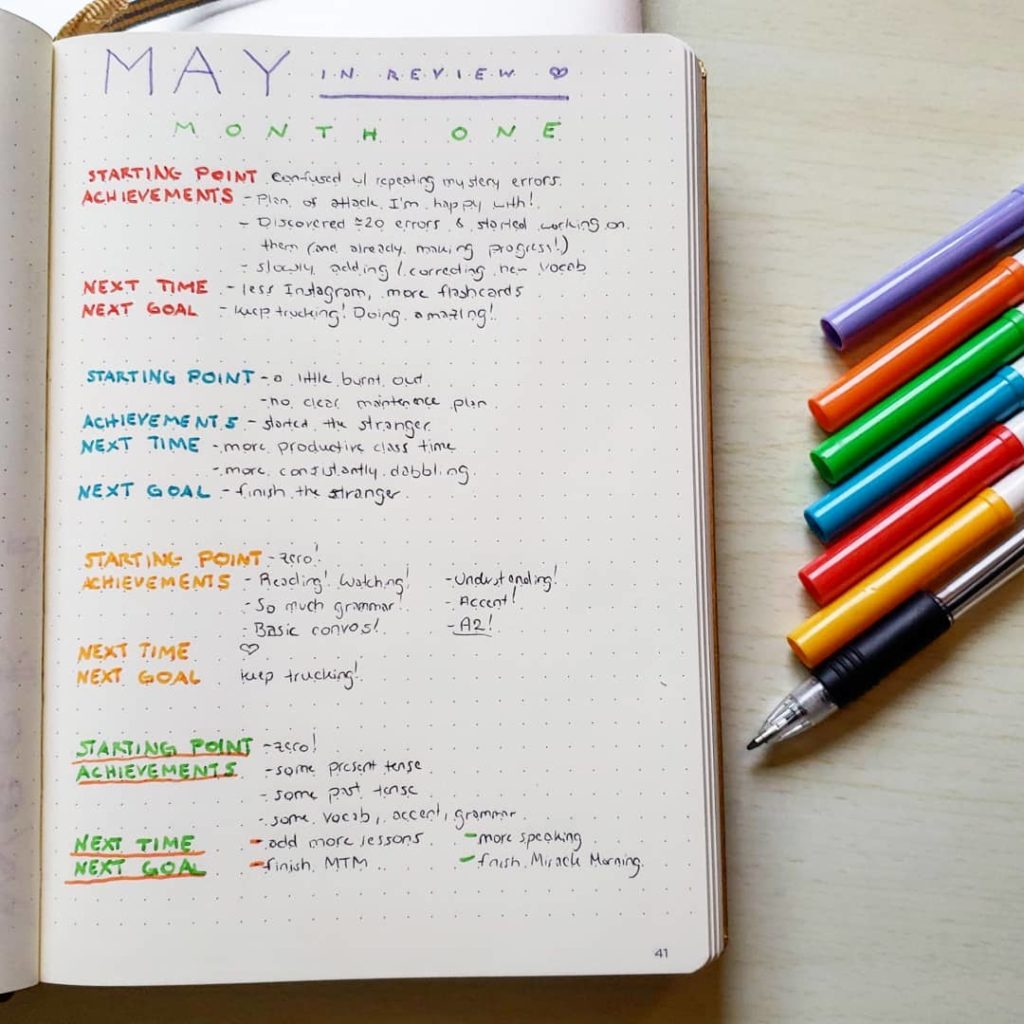
- Daily 90+ min – Even most of my language exchange partners who are retired find this incredibly hard to maintain. Maybe a week before a big trip might be a good time to crank your time up this high, but slow and steady wins the Spanish speaking race.
- “But I only have one day a week where I could study!” – That’s ok! In fact, on top of your daily routine, I recommend having an extra nice Spanish day a week. By doing this you can piggyback a private class with a tutor followed by a foreign film or going to a Spanish grocery store in your area to try out some phrases and have a nice little immersion moment. But on top of that, add another 5min a day. That’s really the minimum, but it will seal in the deal for whatever you learn during your bigger day.
So here we go. Let’s pretend my calculated range was 1,080 and 1,320 because I’m very ambitious.
1,080 hours x 60min = 64,800
1,320 hours x 60min = 79,200
And if I dedicate 30min a day to my Spanish a day:
64,800 ÷ 30 = 2,160 days at a low end
79,200 ÷ 30 = 2,640 days at a high end
But that’s too long for me, so let’s see what I can do with 60min a day:
64,800 ÷ 60 = 1,080 days at a low end
79,200 ÷ 60 = 1,320 days at a high end
Still feels high. Let’s go back and adjust to a more realistic goal A2, which lead me to 320-350 hours. That would be about a year at one hour a day, or two years at 30min a day.
Whatever your goal is, the important thing is to make it feel reasonable.
Step 6.2 - Set a smart financial budget
There’s a huge difference in exploring “how long does it take to get good at Spanish games” and “how long does it take to become fluent in Spanish”.
If you have no money put aside and your plan is to just use free resources online, well… let’s take a look.
Here are some budget options, what you can get with that money, what you can expect, and how it will impact your time.
Remember you’re working with two different numbers now to create your “range”. Apply these calculations to the high and low numbers in that range of time.
- $0 – No judgment. There are some people, maybe the very young or very poor. who simply have no money. But spending $0 means getting stuck at paywalls in apps, not having any access to books if you can’t find your answer online, and not being able to hire a tutor. While there are many AMAZING free resources online if you can’t pay for anything your Spanish learning experience can be extremely frustrating and discouraging. My advice is that if you can afford even just $5 / week that you put that you invest it in your language learning life. Add +10% to your total range of times.
- $5 x week – if this is all you can afford, that works totally fine. If you have $20-25/month, you can still take advantage of a lot of the great free language things online, but now have some basic money for a workbook, an app subscription, or any other resource. You’ll still be without professional help if you need it, but A1 or A2 level learners might find this fine. If your goal is A1 or A2, add +5% to your range since you’ll still be without professional help. For B1 or B2 goal-setters, add +7% because some concepts (like the subjunctive or different pasts) will be hard without someone to help you.
- $10-15 x week – As long as you can afford it, this amount is a great investment in your future. Spanish is an amazing language that can bring a lot of wonderful new things into your life, least of all work and travel opportunities. At any level, but especially up to A2-B1, you’ll find this a comfortable budget. With this much money you’ll be buying textbooks or subscribe to an app you like, as well as pay for an hour a month of private classes with someone who can help you with any problems you encounter. Many Spanish learners I know, especially polyglots who study various languages, spend this much per week on a language.
If you can spend this much per week, leave your total exactly how it is. - $20-30 x week – For me personally, this is how much I spend on my Spanish. You’ll be able to afford 1-3 classes a month (depending on how expensive your teacher or tutor is) plus be abler to pay for additional resources comfortably. You won’t feel pressured when making purchasing decisions while investing in your Spanish, and you’ll be able to try various resources before sticking with your favorite. Can you afford this? Knock off -3% from each end of your current range.
- $30 – 40 x week – Welcome to a total luxury Spanish learning budget. If you can afford to spend this much, you’re lucky because very few people can–but what you can afford is awesome. In the past when I’ve been able to spend this much money on my Spanish I did a private class every week, spent a bit on my uTalk app per year, purchased novels and audiobooks I liked, and still had some leftover for the occasional splurge of bonus tutoring. That was long-term unsustainable, and now I pay less per week, but I zoomed forward with my Spanish when I spent like this. If this is your financial budget, subtract -5%
- $40 – 50 x week – This is a “sprint” amount, and language learning is really a marathon. Last year while developing my company’s Spanish language website, I needed extra tutoring to prepare me for the challenges of doing job interviews in Spanish, so I spent this much on three hours of tutoring per week on that specific topic for a month. It was great, but it was only possible because I was paying for it out of my business budget. Bigger isn’t always better, so if this is your total budget still only subtract -5% (although you’ll likely get more learning in every single week).
- $50+ x week – You cannot buy a language. A language needs to be studied, practiced, and learned by you and you alone, and spending this much money won’t help you learn it faster. In fact, you’ll be wasting money on things like tutoring when you need to be self-studying, or buying more materials than you can use when good free stuff exists online. I strongly advise you to look at a different range of Spanish budgets.
- Additional spending – if you can put aside extra time and money for a week or two in a Spanish speaking country, your life (and language) will be much richer for it. But since this isn’t something that’s possible for a lot of Spanish learners, we’ll leave it out of this calculating for now.
So: how long does it take to learn Spanish?
There is no one set number of years, weeks days, or hours that it will take you to learn Spanish. But if you’ve completed these steps, you’ll have your own personal answer.
What are your goals?
What time did you get?
Leave it in the comments below so future readers can see! And, if you really do start studying Spanish, you can come back here one day and tell me if your calculation for how long it takes you to learn Spanish was correct.
And if you’re trying to relearn Spanish after a long break, make sure you check out my YouTube channel and email list.
¡Buena suerte!
